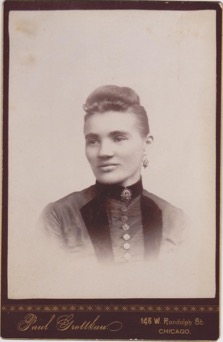 [When, several years ago, my friend and colleague Colleen Thornton introduced me to the research she had begun based on a photograph she purchased on eBay, I offered her as much space as she needed at the blog for publication of her results.
[When, several years ago, my friend and colleague Colleen Thornton introduced me to the research she had begun based on a photograph she purchased on eBay, I offered her as much space as she needed at the blog for publication of her results.
Continuing below, the outcome of Thornton’s painstaking inquiry introduces to the medium’s history two extraordinary figures: a German-born 19th-century U.S.-based anarcho-socialist photographer, Paul Grottkau, and his subject, the African-American anarcho-socialist Lucy Parsons, widow of one of the men railroaded to public hanging in the prosecution of the suspects of the Chicago Haymarket Riot. In the cabinet portrait that Thornton discovered the destinies of these two notable left-wing figures intersect, as her essay makes clear.
Thornton offers a self-contained, persuasive, and compelling analysis, a prime example of what close attention to individual photographs can reveal. This is a first-rate work of scholarship, and a significant addition to the literature. It marks the blog’s first (but perhaps not last) publication of a fully resolved piece of research.
Thornton’s article as written comes in two parts, complete with extensive footnotes. To optimize the online reading experience, I have converted the notes to links whenever possible. I will publish each part in installments — Part II this week and next. Click here for an index page with links to all installments in this series. — A.D.C.]
•
Paul Grottkau, Anarchist Photographer, Part II:
The Sitter, Lucy Parsons
by Colleen Thornton
•
Introduction
The late 19th-century portrait photo examined in this article was offered for sale on eBay. It was described as a photo of an attractive mixed-race woman. Captivated by her face, I took a chance and bid. Antique photographs of African Americans are in high demand and fairly expensive, so I did not expect to win the auction. But in this case the photo came to me. Thus began the search for the story behind this image, with the only solid clue the photographer’s name and address stamped on the bottom of the cabinet card.
Sometime between the summer of 1888 and the end of 1889, this beautiful, well-dressed woman commissioned Paul Grottkau (1845-98), the anarchist labor leader and commercial photographer previously discussed at length, to take her picture at his studio near the Haymarket in Chicago. Who could this lady be? Her face reveals multiple possibilities of a mixed heritage, but not a definitive identification of her background.
In fact, Paul Grottkau knew quite well a particular woman who matches the physical characteristics of the woman in his photograph. Her name was Lucy Parsons (1851-1942). When this photo was taken, Parsons was approximately 37 years old and recently widowed. Her husband, the infamous American anarchist Albert R. Parsons (1848-87), had been unjustly convicted for the Haymarket Bombing, which occurred in Chicago on May 4, 1886, and was executed by hanging on November 11, 1887.
•
Before researching this image, I had no prior knowledge of Paul Grottkau or Lucy Parsons. While I learned about the Haymarket Bombing in my high-school history class, the labor movement of the period was only briefly touched upon, with little real context or detail. Albert Parsons was named as a convicted Haymarket bomber, but there was no mention of his controversial “mixed-race” wife, Lucy.
Upon researching the photographer Paul Grottkau, once I acquired this thereto anonymous portrait, it became apparent that his involvement in the Chicago anarchist labor movement and his close professional relationship with its leaders was a significant clue to identifying the subject of this photo. I quickly discovered that Paul Grottkau had forged a political partnership with Albert and Lucy Parsons soon after he settled in Chicago. The contemporary newspaper reports of both Grottkau’s and the Parsons’s political work revealed the nature and extent of their shared activities and also the unique story of Lucy Parsons as both a notorious anarchist and “‘woman of color.”
![Cabinet card logo ca. 1888-89 for studio of Paul Grottkau, 148 W. Randolph St. Chicago. [Collection of the author]](https://www.nearbycafe.com/artandphoto/photocritic/wp-content/uploads/2020/05/Paul_Grottkau_Chicago_studio_logo_1888.jpg)
Cabinet card logo ca. 1888-89 for studio of Paul Grottkau, 148 W. Randolph St. Chicago. [Collection of the author]
Contemporary reporters delighted in describing Lucy Parsons’s appearance and attire in detail, noting her tasteful black silk and velvet gown, fashionable jewelry, fancy buttons and other accessories, her carefully groomed hair style, all details that exactly match this photo.
Close visual comparisons of Grottkau’s photo with the other known photos of Lucy Parsons taken by other photographers during that same time period and the few extant images of her taken much later in life show a striking similarity in the distinctive facial features and bone structure, and her uniquely sublime expression that remained constant across the decades. Based on the visual evidence, along with the contemporary documentation of her appearance, and supported by the close personal relationship between Paul Grottkau and Lucy Parsons, this photograph could be of no other “mixed-race” woman.
The Public Persona of Lucy Parsons
In preparation for this portrait, the sitter paid careful attention to all the details that would be permanently captured by the photographer’s lens. Her hair, pulled away from her face, is meticulously coiffed. A curling iron set the forehead bangs upward into a tight roll and her hair is pulled up into a prim top bun, with not a stray hair to be found.
The severe hairdo calls attention to her striking features and serene expression. Her elegant black silk dress, embellished with a velvet collar and lapels and fancy metal buttons, displays the good taste and respectability of a middle-class matron. Finely wrought gold earrings and a matching brooch at the neckline are the finishing touches. Her dignified, dark attire is typical of 19th-century “widow’s weeds.”
![Cabinet card photographic portrait of a "mixed-race" lady, taken sometime in 1888 - 1889, by "Paul Grottkau, 148 W. Randolph St. Chicago." [Collection of the author]](https://www.nearbycafe.com/artandphoto/photocritic/wp-content/uploads/2020/05/Paul_Grottkau_Lucy_Parsons_cabinet_card_lg.jpg)
Cabinet card photographic portrait of a “mixed-race” lady, taken sometime in 1888-1889 by “Paul Grottkau, 148 W. Randolph St. Chicago.” [Collection of the author]
•
This presentation creates a balance between austerity and refinement. The sitter’s awareness of the importance of these details indicates her intent to create a very specific and positive impression in the viewer’s mind. This is no less significant than the fact that she is apparently of mixed racial heritage. A subtle sense of purpose pervades the image. This woman thoughtfully fashioned a visual persona that she knew would have viewers encumbered by preconceived notions, who would interpret it through a host of social significations.
•
In the immediate aftermath of the Haymarket Bombing, the alleged bomber’s wife, Mrs. A. R. (Lucy) Parsons, embarked on an extensive speaking tour of the major cities of the U.S. northeast and midwest, where she addressed audiences about the miscarriage of justice being perpetrated in Chicago against her husband and his comrades. The local and national newspapers extensively covered Mrs. Parsons’s sensational lecture tour — including the New York Times, which described her persona and attire in specific detail, including her black satin dress, French heel boots and her “Gainsborough black hat with a half dozen handsome black ostrich feathers.”[1]
Throughout her life, Parsons remained fastidious in her appearance. As seen in the few surviving photographs, her personal style included delicate feminine touches such as lace, ruffles, scarves, brooches at the neckline, and flouncy hats. Her modest, ladylike demeanor stands in stark contrast to the image of the anarchist firebrand preaching an incendiary political philosophy during a long and tempestuous life.
According to her biographer, Jacqueline Jones, “Parsons’s manner of dress provided some measure of gravitas and ruled out any descriptions of her as lacking in good fashion sense. She always appeared in a form-fitting black gown, either plain or embossed in black velvet. … Her long hair was worn with bangs and a fashionable topknot on her head, and she eschewed makeup and used tasteful accessories.” Jones adds that in the press she was described as a “modern Cleopatra, a veritable African queen.”[2]
Both before and after her husband’s death, Lucy Parsons supported her family as a skilled dressmaker. She and her husband owned and operated a clothing manufacturing business, with Albert serving as its sales representative while Lucy designed and sewed fashionable garments and managed the shop. She was actively involved in early attempts to unionize the workers of Chicago’s sewing trade and was a prominent member of the Working Women’s Union (WWU), knowing “firsthand the tribulations of those who engaged in women’s work, paid or unpaid.”[3]
•
Lucy had her photo taken in New York City by German American photographer August Brauneck, probably in October or November 1886 when she was in town for speaking engagements. (More on this later.) In the several portraits taken that day, she wears a dark, wide-striped silk dress with a gold pin fastening a black lace collar at the neck. In Brauneck’s headshot she donned a fetching hat festooned with ostrich feathers. For decades, these images would be reproduced nationwide as engraved illustrations created by various hands in newspapers and periodicals.
•
Precious few photos of Lucy Parsons reside in public collections, and there is a wide gap in time between Brauneck’s well-known set of photos and those taken decades later in Lucy’s senior years. The lack of visual documentation may be, in part, the result of the house fire that killed Lucy on the night of March 7, 1942. The next day, as embers still smoked, the authorities carted away the remains of her extensive library and life’s papers.
According to the Chicago Tribune, March 8, 1942, “There was also a library of 2,500 to 3,000 volumes, all devoted to anarchism, socialism, and sex. Assistant Corporation Counsel, Earl Downes, took charge of the books.“[4] This politically motivated seizure certainly pleased the ambitious FBI director J. Edgar Hoover, who considered the old woman to be an enemy of the state. With her death and the remains of her life’s work seized by the local “Red Squad” in cooperation with federal agents, her unrelenting voice was finally silenced.
What became of the remains of her personal effects remains unknown, although a clue appeared during a book auction held in Stroud, England on October 14, 2015, where a rare volume once belonging to her was sold. The book, Signs of Change: Seven Lectures Delivered on Various Occasions, by the great British artist and socialist William Morris (1834-96), is inscribed “To Lucy E Parsons from William Morris November 15, 1888.” Pages are stamped “Property of Federal Bureau of Investigation US Department of Justice” and “Surplus Library of Congress Duplicate.” The book has signs of smoke damage.[5]
Some of Lucy’s personal photos, amassed over a lifetime, were likely among the confiscated possessions that survived the fire and, like Morris’s book, may have eventually found their way to the marketplace.
•
Parsons embarked on a British lecture tour on October 31, 1888. According to author Stephen Keeble, in his article, “William Morris Meets Lucy Parsons,” published by The William Morris Society in America,
“Lucy Parsons’ acceptance of an invitation to visit Britain was announced, mid-October 1888, in The Commonweal — co-edited by William Morris and future son-in-law Henry Halliday Sparling. She was to be the main attraction at a series of meetings in London and elsewhere to commemorate the first anniversaries of Chicago’s ‘Haymarket’ hangings and London’s ‘Bloody Sunday.'”[6]
When she arrived in London in early November she met with William Morris, addressed the Socialist League of England as well as other political organizations in both England and Scotland, and held court at Morris’s home with leading socialist, political, and cultural leaders. Morris described her as “… a curious looking woman: No signs of European blood in her, Indian with a touch of negro; but she speaks pure Yankee.” A British newspaper noted that “She is handsome with a strange beauty. But it is not until she speaks that the full power of her personality strikes you.”[7]
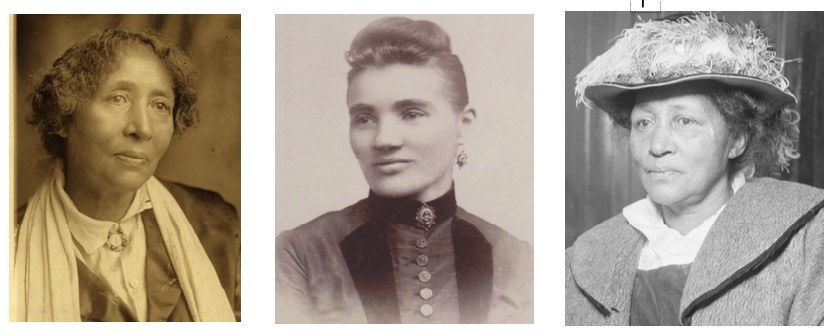
Lucy Parsons, 3 views. Left: Joseph A. Labadie Collection, University of Michigan Library; Center: Collection of the Author; Right: Chicago Historical Society, 1915.
•
After 1886, the next publicly known photos of Lucy Parsons were taken almost 30 years later. The photo of Lucy taken in 1915 while in Chicago police custody after the demonstration she led at Hull House (above right) and the formal professional portrait (above left) circa 1927 offer useful comparisons to the much younger woman in Paul Grottkau’s photo (center). The serene gaze of the sitter is identical in each image, an expression consistent and unbowed by struggle or age.
It is important to note here that Grottkau’s headshot was artfully retouched. Under close inspection it is plain to see that the nose has been altered in shape and the mouth in definition. Lucy’s mouth naturally turned downward at the corners. In this photo, the lateral commissure of her mouth has been given a softened, upturned appearance, the curve of the right side of her upper lip slightly foreshortened, and her lower lip and the arch and points of the cupid’s bow enhanced. Apparently, the photographer aimed to flatter the sitter by giving her a “Mona Lisa” smile.
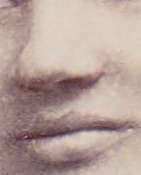
Paul Grottkau, portrait of Lucy Parsons, 1888-89. Detail of Grottkau’s photo: evidence of retouching on the nose and lips.
The retouching to her nose is more intrusive. The photographer, using a graphite utensil, drew a discernable line and added discreet shadowing that redefines its shape. The bulb and right nostril are obfuscated. Added from the tip upward is a distinct curve that obscures the wider shape and straight line of the dorsum, giving the false impression of an upturned nose.
Grottkau left intact her beautiful almond-shaped eyes, deeply curved eyelids, thick eyebrows and high forehead. The left earlobe fades into the white background, its outline and details partially lost, while the strong chin and jaw line and high cheekbones of her handsome three-quarter profile remain emphasized. The photographer’s use of direct, bright light bleaches out the skin’s tonal range and limits the depth of field against the flat white background. This technique results in the sitter’s complexion matching the color and tone of the background. Could Grottkau’s lighting and post-production alterations have been intentional manipulations to supplant the public’s widely held perception of Lucy Parsons’s racial background?
The relationship between photographer and sitter is, at best, an intimate collaboration that serves mutual purposes. This photograph is a perfect example of that truism, and quite possibly a conscious attempt to seize control of the public narrative from a hostile media. …
(To be continued.)
•
Click here for an index page with links to all installments in this series.
•
Notes:
[1] Jacqueline Jones, Goddess of Anarchy: The Life and Times of Lucy Parsons, American Radical (NY: Basic Books, 2017), p. 177.
[2] Jones, op. cit.
[3] Jones, op. cit., p. 75; Casey Williams, “Whose Lucy Parsons? The Mythologizing and Re-appropriation of a Radical Hero,” The Anarcho-Syndicalist Review, No. 47, Summer 2007, pp. 10-11.
[4] “Lucy Parsons, Blind Anarchist Burned to Death,” Chicago Tribune, March 8, 1942.
[5] “William Morris Meets Lucy Parsons,” by Stephen Keeble, in Useful and Beautiful, Winter 2018, pp. 8-17, http://www.morrissociety.org/publications/magazine/2010s/2018.2WinterUsefulBeautiful.pdf. This journal is published by The William Morris Society in America.
[6] Keeble, op. cit.
[7] Jones, op. cit., p. 216.
•
Photo credits:
1. Portrait of Paul Grottkau, Joseph A. Labadie Collection, Hatcher Graduate Library, University of Michigan, Ann Arbor, MI, Filing Code: LPF Grottkau, Paul.1; Accession #: LPF.0410, “Paul Grottkau,” cabinet card, circa 1891-1898, Holler’s Studio, No. 8 Sixth St., First Gallery Below Market St., San Francisco, Cal. (photographer).
2. Photo of Lucy Parsons by Paul Grottkau, Chicago, 1888-89, Collection of the author.
3. Cover of Goddess of Anarchy, The Life and Times of Lucy Parsons, American Radical by Jacqueline Jones (New York: Basic Books, 2017), derived from photo of Lucy Parsons by August Brauneck, New York, 1886, Prints & Photographs Division, Library of Congress.
4. Photo of Lucy Parsons by August Brauneck, New York, 1886, as published in the Chicago Tribune, http://digitaledition.chicagotribune.com/tribune/article_popover.aspx?guid=552e070e-05f8-4687-9d2a-8385caf68292.
5. Photo of Lucy Parsons by August Brauneck, New York, 1886, Prints & Photographs Division, Library of Congress.
6. Lucy Parsons, 3 views. Left: Photographer unknown, Lucy Parsons as Guest of Honor at the November 1927 International Labor Defense Convention, as reproduced in Lucy Parsons: American Revolutionary by Carolyn Ashbaugh, (Chicago: Charles H. Kerr Publishing Company, 1976), p. 10, from Joseph A. Labadie Collection, University of Michigan Library, http://quod.lib.umich.edu/s/scl/x-lpf.0864. Center: Paul Grottkau’s portrait photo of Parsons, 1886, collection of the author. Right: Photographer unknown, three-quarter-length portrait of Mrs. Lucy E. Parsons, arrested for rioting during an unemployment protest at Hull House in Chicago, Illinois, 1915, Collection of the Chicago Historical Society.
7. Detail of Paul Grottkau’s cabinet-card portrait photo of Parsons, 1888–1889, Collection of the author.
•
 Trained as a painter/printmaker in NYC art schools, Colleen Thornton over the past four decades has focused on fine-art curation and research, arts advocacy, administration and fundraising, and business development. She co-founded and was executive director of City Without Walls Gallery in Newark, NJ. While living in Europe (UK and Denmark) for two decades she worked in the fine arts and architecture on various projects, including fundraising, gallery exhibitions, and international conferences.
Trained as a painter/printmaker in NYC art schools, Colleen Thornton over the past four decades has focused on fine-art curation and research, arts advocacy, administration and fundraising, and business development. She co-founded and was executive director of City Without Walls Gallery in Newark, NJ. While living in Europe (UK and Denmark) for two decades she worked in the fine arts and architecture on various projects, including fundraising, gallery exhibitions, and international conferences.
Thornton has built a substantial collection of 19th- and early 20th-century vernacular photography, Japanese ukiyo-e, and Scandinavian works on paper. As a private dealer, she has added to the collections of several major museums.
With former U.S. Ambassador to Denmark Richard N. Swett, FAIA, Thornton researched and co-authored the book Leadership by Design: Creating an Architecture of Trust (2005). Her writings on cultural topics, including photography, have been published in the U.K., Denmark and the U.S. To contact Colleen Thornton, click here.


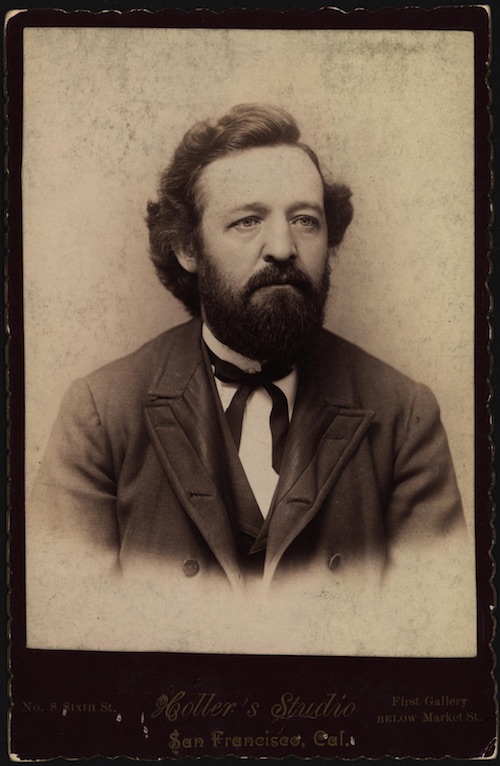
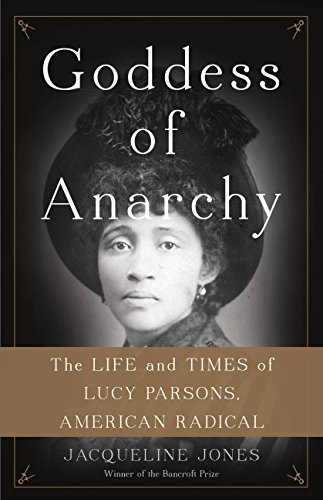
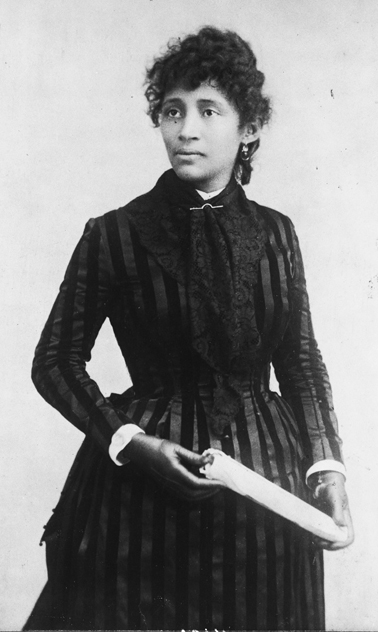
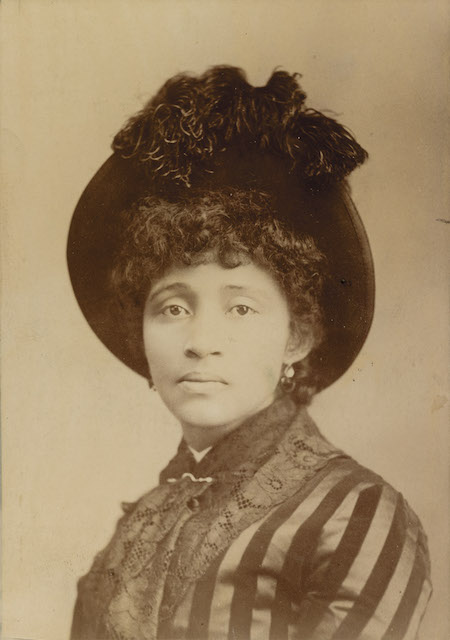




Leave a Comment